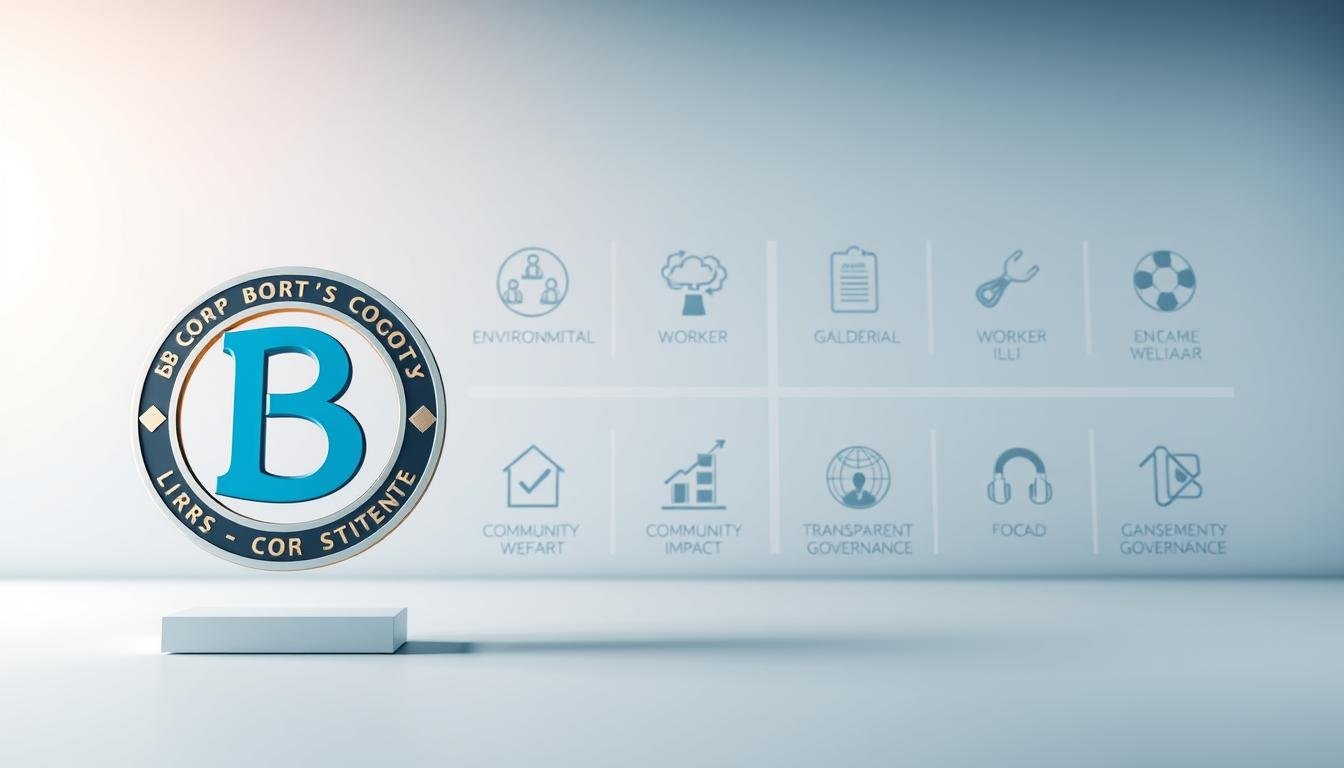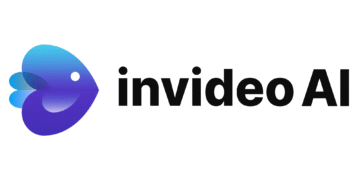What if your company’s sustainability report is actually missing the most critical information stakeholders want to see?
Many organizations struggle with transparent disclosure. They collect data but fail to present it in ways that build real trust. This gap between reporting and meaningful communication affects businesses worldwide.
The Global Reporting Initiative provides the world’s most widely used framework for sustainability reporting. This independent organization developed standards that help companies understand their full impacts.
These reporting standards offer a clear structure for disclosure. They enable organizations to manage risks and identify opportunities more effectively. Thousands of businesses now use this framework to enhance their transparency and decision-making processes.
Key Takeaways
- GRI Standards represent the global benchmark for sustainability reporting
- The framework helps organizations understand their complete environmental and social impacts
- These standards enhance transparency and build stakeholder trust across industries
- The modular structure allows for continuous updates and sector-specific adaptations
- Implementation provides practical benefits for risk management and strategic decision-making
- GRI maintains its position as the world’s most widely adopted sustainability reporting framework
Introduction to Sustainability Reporting and GRI
The evolution of corporate accountability now demands transparent reporting on sustainability performance. Organizations worldwide recognize that environmental, social, and governance disclosures are no longer optional. They have become essential components of modern business communication.
This shift reflects growing stakeholder expectations for corporate responsibility. Investors, customers, and regulators seek comprehensive information about organizational impacts. Effective sustainability reporting addresses these demands while creating business value.
The Growing Importance of ESG Transparency
Market pressures drive the need for better environmental and social disclosures. Investors increasingly consider ESG factors when making decisions. They want clear data on carbon emissions, energy use, and community impacts.
Consumers also demand greater corporate responsibility. They prefer companies that demonstrate sustainable practices. Regulatory requirements continue to evolve worldwide, adding compliance pressure.
This convergence of stakeholder expectations creates a powerful business case. Organizations that embrace comprehensive reporting gain competitive advantages. They build stronger relationships with investors, customers, and communities.
Transparent disclosure also improves risk management processes. Companies can identify potential issues before they become problems. This proactive approach supports long-term business sustainability.
How GRI Became the Global Standard
The Global Reporting Initiative emerged from a clear market need. Founded in 1997, this organization developed the first sustainability reporting framework. Its multi-stakeholder approach ensured broad acceptance across sectors.
The initiative published its first draft guidelines in March 1999. The complete framework launched in June 2000. This established a structured approach to sustainability disclosure.
In 2002, the organization moved to Amsterdam and incorporated as a non-profit. It became a UNEP Collaborating Centre, strengthening its global position. This transition marked its evolution from US initiative to worldwide authority.
Today, over 10,000 companies across 100+ countries use these reporting standards. Recent surveys show impressive adoption rates among major corporations. Seventy-eight percent of the world’s largest 250 companies follow this framework.
The standards continue evolving to address emerging sustainability challenges. Their modular structure allows for regular updates and sector-specific adaptations. This flexibility maintains their relevance in a changing business environment.
The framework’s widespread acceptance demonstrates its practical value for organizations worldwide. It provides a common language for sustainability reporting that stakeholders understand and trust.
What Are GRI Standards?
Understanding the framework behind sustainability disclosures reveals why certain standards dominate global reporting practices. These guidelines provide the structural foundation for comprehensive organizational communication about environmental and social impacts.
History and Development of Global Reporting Initiative
The journey began with a clear need for standardized sustainability reporting. Early efforts focused on creating consistent frameworks for impact disclosure.
Multiple stakeholders contributed to developing these reporting standards. Their collaborative approach ensured broad acceptance across different industries and regions.
The framework evolved through several major revisions. Each update incorporated emerging sustainability topics and changing stakeholder expectations.
GRI’s Organizational Structure and Governance
This standards organization operates with a unique multi-stakeholder governance model. Independent bodies ensure the framework remains credible and relevant.
The Global Sustainability Standards Board oversees standard development. This independent committee maintains the technical quality of all reporting requirements.
Regular review cycles occur every three years. This process ensures the standards reflect current sustainability challenges and opportunities.
Legal registration as a Public Benefit Organization in the Netherlands reinforces its independence. This status supports the organization’s mission without commercial influence.
The governance structure includes several key components. A board of directors provides strategic direction while technical committees handle standard development.
Stakeholder councils offer valuable input from diverse perspectives. This inclusive approach strengthens the framework’s global applicability.
International collaborations enhance the standards’ relevance across different regulatory environments. Partnerships with global organizations ensure alignment with emerging sustainability requirements.
The multi-stakeholder network provides continuous feedback for improvement. This dynamic process maintains the framework’s position as the leading choice for sustainability reporting.
Organizations worldwide benefit from this well-structured approach to impact disclosure. The consistent methodology enables comparable sustainability performance reporting across sectors and regions.
The GRI Standards Framework
Many companies struggle to organize their sustainability data effectively. The framework’s modular design solves this challenge through three interconnected components.
These components work together to create comprehensive reports. They help organizations address all relevant sustainability topics.
Universal Standards: GRI 1, 2, and 3
Every organization must follow three universal standards. These form the foundation of all sustainability reporting.
GRI 1 establishes the basic principles and requirements. It explains how to use the entire framework correctly.
GRI 2 covers general disclosures about your organization. This includes details about your business activities and governance structure.
GRI 3 addresses material topic identification and management. It guides companies through the materiality assessment process.
These universal standards ensure consistent reporting across all industries. They provide the common language that stakeholders understand.
Sector-Specific Standards
Some industries face unique sustainability challenges. Sector standards address these specific circumstances.
High-impact sectors like fossil fuels and agriculture have dedicated guidelines. These help companies report on industry-specific issues.
The standards consider particular environmental and social impacts. They provide relevant metrics for each sector’s operations.
This approach ensures meaningful comparisons within industries. Companies can benchmark their performance against peers.
Topic Standards: Economic, Environmental, and Social
Topic standards dive deep into specific sustainability areas. They organize into three series based on impact categories.
The 200 series covers economic topics like anti-corruption and taxes. These disclosures show how companies create economic value.
Environmental standards (300 series) address energy use and emissions. They help organizations track their environmental footprint.
Social standards (400 series) focus on community impacts and labor practices. These ensure proper treatment of workers and communities.
Each topic standard includes two types of disclosures. Management approach explanations show how companies handle each topic.
Topic-specific disclosures provide quantitative and qualitative data. This combination gives stakeholders complete information.
For example, GRI 403 covers occupational health and safety. It includes ten specific disclosures about worker protection systems.
These range from hazard identification to health promotion activities. The standard ensures comprehensive coverage of workplace safety.
The modular structure allows for continuous updates as new topics emerge. This keeps the framework relevant for changing business environments.
All components work together to create holistic reports. Companies can demonstrate their complete sustainability performance.
Benefits of Using GRI Standards
Organizations that adopt these reporting standards gain significant advantages. The framework transforms how companies communicate their sustainability performance.
These benefits extend across multiple business areas. They create value for both internal decision-making and external stakeholder relationships.
Enhanced Transparency and Stakeholder Trust
Comprehensive disclosures build credibility with diverse audiences. Companies share complete information about their environmental and social impacts.
This openness strengthens relationships with investors and communities. It demonstrates genuine commitment to sustainable development.
Transparent reporting covers economic, environmental, and social dimensions. Stakeholders receive a full picture of organizational performance.
Trust-building mechanisms work through consistent, honest communication. Organizations show how they manage material topics and address challenges.
Improved Risk Management and Decision-Making
Systematic impact identification helps companies spot potential issues early. The standards guide organizations through thorough assessment processes.
Standardized data supports better strategic choices. Leaders gain clear insights into sustainability performance.
This information improves both operational and long-term planning. Companies can allocate resources more effectively.
Risk profiles become clearer through comprehensive disclosure. Organizations understand their exposures and opportunities better.
Global Comparability and Consistency
The framework enables meaningful benchmarking against industry peers. Companies can measure their performance using consistent metrics.
Multinational organizations benefit from standardized reporting across jurisdictions. They maintain consistency in their global disclosures.
This comparability helps investors analyze companies against common standards. It creates a level playing field for sustainability performance.
Market value increases through demonstrated commitment to transparency. Nearly all S&P 500 companies now publish sustainability reports.
Investor confidence grows with comprehensive risk profile disclosure. The standards support both regulatory compliance and voluntary initiatives.
Competitive advantages come from leadership in sustainability reporting. Organizations that embrace these standards position themselves as industry leaders.
Implementing GRI Standards in Your Organization
Successfully implementing sustainability reporting standards requires careful planning and execution across your organization. This process transforms framework understanding into actionable reporting practices.
The implementation journey involves several critical components working together. Each element contributes to creating comprehensive and credible sustainability disclosures.
Materiality Assessment Process
The materiality assessment forms the foundation of meaningful sustainability reporting. This systematic approach identifies what matters most to your business and stakeholders.
GRI 3 provides a clear five-step process for determining material topics. Organizations begin by understanding their context and business environment.
Next comes impact identification across economic, environmental, and social dimensions. Companies examine both actual and potential sustainability impacts.
Significance assessment follows using established techniques and stakeholder input. This step prioritizes impacts based on their importance to the organization and external parties.
The final stages involve prioritizing these impacts and determining material topics. This structured approach ensures reports focus on what truly matters.
Data Collection and Management Approaches
Effective data collection supports accurate sustainability reporting. Organizations gather both quantitative and qualitative information across multiple areas.
Common challenges include resource limitations and staff training needs. Many companies struggle with consistent data gathering across departments.
Robust management strategies ensure data accuracy and verification readiness. These approaches maintain consistency throughout the reporting cycle.
ESG software solutions like Envizi streamline data collection processes. These tools integrate with existing systems and support framework requirements.
Proper data management prevents greenwashing accusations and maintains reporting quality. It demonstrates commitment to transparent sustainability communication.
Reporting Options: In Accordance vs. In Reference
Organizations choose between two main reporting approaches under the global framework. The “in accordance” option represents the most comprehensive application.
This approach requires meeting all relevant standard requirements completely. It demonstrates full adherence to the reporting framework’s principles.
The “in reference” option allows more flexible standard application. Companies still follow the framework but with certain adaptations.
Both reporting choices require formal notification to the standards organization. Requirement 9 of the foundation standard mandates this communication.
This notification process maintains the integrity of the reporting ecosystem. It helps track framework adoption and supports continuous improvement.
Companies should select the option that best matches their reporting maturity and stakeholder expectations. Both approaches contribute to transparent sustainability disclosure.
GRI and Regulatory Landscape
The global sustainability reporting environment continues evolving with new mandatory requirements. Organizations must navigate multiple frameworks while maintaining consistent disclosure practices.
Regulatory developments create both challenges and opportunities for transparent reporting. Companies need frameworks that adapt to changing legal landscapes.
Alignment with EU Directives (NFRD and CSRD)
The European Union leads regulatory changes with its comprehensive sustainability reporting directives. The Non-Financial Reporting Directive established initial requirements for large public companies.
This directive applied to organizations with 500 or more employees. It mandated disclosure of environmental and social impacts alongside financial information.
The Corporate Sustainability Reporting Directive represents a significant expansion of these requirements. Effective from January 2023, CSRD covers many more companies with stricter reporting standards.
European Sustainability Reporting Standards form the technical basis for CSRD implementation. These standards incorporate the double materiality concept requiring dual perspective reporting.
Organizations must report both how sustainability impacts affect their business and how their activities impact society and environment. This comprehensive approach ensures complete stakeholder transparency.
Relationship with ISSB and Other Frameworks
The International Sustainability Standards Board emerged to address investor-focused reporting needs. ISSB issued its inaugural standards IFRS S1 and S2 in June 2023.
These standards prioritize financial materiality from an investor perspective. They complement rather than compete with broader sustainability frameworks.
A March 2022 collaboration announcement between reporting organizations signaled important alignment efforts. This partnership works towards interoperability between different standard approaches.
The Global Reporting Initiative maintains its multi-stakeholder perspective while ensuring compatibility. Companies can use both frameworks for comprehensive reporting that serves diverse audiences.
Interoperability efforts prevent redundant reporting while maintaining different stakeholder perspectives. Organizations benefit from this coordinated approach to sustainability disclosure.
Future Regulatory Developments
Regulatory trends point towards increased mandatory reporting requirements worldwide. More jurisdictions will likely adopt sustainability disclosure rules in coming years.
The United States shows growing interest in standardized ESG reporting frameworks. SEC climate disclosure rules represent one example of this expanding regulatory focus.
Companies using established reporting standards position themselves well for future compliance. They develop the systems and processes needed for comprehensive disclosure.
Organizations should monitor regulatory developments while building robust reporting capabilities. Proactive preparation reduces compliance costs and enhances stakeholder confidence.
Future regulations will likely emphasize comparable, verifiable sustainability information. Standardized frameworks provide the foundation for meeting these evolving requirements effectively.
Conclusion: The Future of Sustainability Reporting with GRI
Digital transformation is reshaping how companies collect and report sustainability data. The Global Reporting Initiative maintains its leadership through continuous framework evolution.
Regular three-year reviews ensure standards address emerging sustainability challenges. Expanded sector standards provide industry-specific guidance for comprehensive disclosures.
Strategic collaborations with international organizations enhance global reporting consistency. These partnerships support regulatory alignment across different jurisdictions.
Technological innovations will transform data collection and verification processes. Organizations can expect more automated and transparent reporting capabilities.
Companies should begin their sustainability reporting journey now. Early adoption positions businesses for future compliance and stakeholder trust.
FAQ
What are the GRI Standards?
The GRI Standards are the world’s most widely used guidelines for sustainability reporting. They provide a structured framework for organizations to disclose their economic, environmental, and social impacts in a transparent and comparable way.
Why should my organization use the GRI Standards?
Using the GRI Standards enhances transparency, builds stakeholder trust, and improves risk management. It also allows for global comparability with other organizations and helps meet growing regulatory and investor expectations.
How do the GRI Standards relate to mandatory regulations like the EU’s CSRD?
The GRI Standards are designed to align with major regulatory frameworks, including the EU’s Corporate Sustainability Reporting Directive (CSRD). Using GRI can help organizations prepare for compliance with current and future legal requirements.
What is the difference between reporting “in accordance” with GRI and “with reference” to GRI?
Reporting “in accordance” means fully applying all relevant GRI Standards and making a detailed claims statement. “With reference” involves using some GRI Standards but not meeting all requirements for a full claim of accordance.
How does the materiality assessment process work under GRI?
The materiality assessment helps organizations identify and prioritize their most significant sustainability impacts. It involves engaging with stakeholders to determine which topics are most relevant to report on, ensuring the report focuses on what truly matters.
Are there sector-specific GRI Standards available?
Yes, in addition to universal and topic-specific standards, GRI offers sector-specific standards for industries like oil and gas, coal, agriculture, and mining. These provide tailored guidance for unique sector impacts.
How often are the GRI Standards updated?
The Global Reporting Initiative periodically reviews and updates its standards to reflect evolving best practices, stakeholder expectations, and regulatory changes. Organizations should stay informed about revisions to ensure their reporting remains current.






